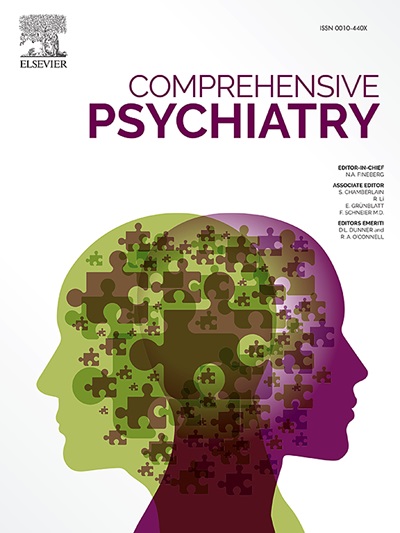以鹿鼠(Peromyscus maniculatus bairdii)为模式生物,探索导致强迫性僵化的自然心理生物学机制:进展与机遇综述。
IF 4.2
2区 医学
Q1 PSYCHIATRY
引用次数: 0
摘要
鹿小鼠(Peromyscus maniculatus bairdii)是一种原产于北美洲的野生型物种,其自发性强迫行为已被研究过。鹿小鼠有三种独特的强迫行为表型,即高度刻板行为(HS)、大型筑巢行为(LNB)和高度大理石埋藏行为(HMB),其重复性和持续性的特点是行为和认知僵化。在这篇叙述性综述中,我们总结了将该模型应用于研究强迫症(OCD)的主要进展,强调了如何利用该模型来研究僵化的神经生物学和神经认知方面。事实上,鹿小鼠为该领域提供了一个独特的自然和自发的行为和认知僵化模型系统,有助于研究支撑一系列强迫症表型的心理生物学机制。在整篇综述中,我们强调了未来研究的新机遇。本文章由计算机程序翻译,如有差异,请以英文原文为准。
The deer mouse (Peromyscus maniculatus bairdii) as a model organism to explore the naturalistic psychobiological mechanisms contributing to compulsive-like rigidity: A narrative overview of advances and opportunities
Deer mice (Peromyscus maniculatus bairdii), a wildtype species native to North America, have been investigated for their spontaneous compulsive-like behaviour. The repetitive and persistence nature of three unique compulsive-like phenotypes in deer mice, i.e., high stereotypy (HS), large nesting behaviour (LNB) and high marble burying (HMB), are characterized by behavioural and cognitive rigidity. In this narrative review, we summarize key advances in the model's application to study obsessive-compulsive disorder (OCD), emphasizing how it may be used to investigate neurobiological and neurocognitive aspects of rigidity. Indeed, deer mice provide the field with a unique naturalistic and spontaneous model system of behavioural and cognitive rigidity that is useful for investigating the psychobiological mechanisms that underpin a range of compulsive-like phenotypes. Throughout the review, we highlight new opportunities for future research.
求助全文
通过发布文献求助,成功后即可免费获取论文全文。
去求助
来源期刊

Comprehensive psychiatry
医学-精神病学
CiteScore
12.50
自引率
1.40%
发文量
64
审稿时长
29 days
期刊介绍:
"Comprehensive Psychiatry" is an open access, peer-reviewed journal dedicated to the field of psychiatry and mental health. Its primary mission is to share the latest advancements in knowledge to enhance patient care and deepen the understanding of mental illnesses. The journal is supported by a diverse team of international editors and peer reviewers, ensuring the publication of high-quality research with a strong focus on clinical relevance and the implications for psychopathology.
"Comprehensive Psychiatry" encourages authors to present their research in an accessible manner, facilitating engagement with clinicians, policymakers, and the broader public. By embracing an open access policy, the journal aims to maximize the global impact of its content, making it readily available to a wide audience and fostering scientific collaboration and public awareness beyond the traditional academic community. This approach is designed to promote a more inclusive and informed dialogue on mental health, contributing to the overall progress in the field.
 求助内容:
求助内容: 应助结果提醒方式:
应助结果提醒方式:


